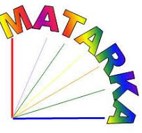A természetesvízi halászat szerepe vizeink biodiverzitásának alakulásában
Absztrakt
A természetesvízi halászat és horgászat, valamint a vízi és vizes élőhelyek kapcsolatrendszerének jobb megértését a természetvédelmi, gazdasági és társadalmi igények teszik mára sürgetővé. Ehhez járulnak a fenntartható működtetés peremfeltételeit biztosító szabályozók megalkotásának szükségletei. A témakör feldolgozásához az ökológia diszciplínája megfelelő tudományos hátteret biztosít. Erre alapozva tettünk javaslatot a természetesvízi halászat fogalomkörének és definícióinak tisztázására, összhangot teremtve a nemzetközi szakirodalommal is. Egy új, ökológiai szemléletű természetesvízi halászat tudományos megalapozásának első lépéseként elemeztük a hazai víztípusok fogási és telepítési statisztikai adatait. Emellett összegyűjtöttük és értékeltük az elmúlt 15 év témával kapcsolatos publikációit. Ezek alapján megállapítható, hogy vizeink természetes halközösségeinek átalakulása és degradációja az elmúlt évtizedben sem állt meg. A vizsgált időszakban egyes populációk relatív túlhasználata jellemző. A recens hazai irodalomban a témával foglalkozó természettudományos publikáció kevés. Ugyanakkor a jellemző problémák meglehetősen széles köre felvetődik, így alkalmas alapot biztosítanak a további tudományos vizsgálatok irányvonalainak meghatározásához.
Hivatkozások
Antalfi, A. & Tölg, I. (1971): Halgazdasági ABC. – Mezőgazdasági Kiadó. Budapest. 218 pp.
Arlinghaus, R. & Cooke, S. J. (2005): Global impact of recreational fisheries. – Science 307: 1561–1562.
Armstrong, R. A. & McGehee, R. (1980): Competitive exclusion. – American Naturalist 115: 151–170.
Beard, T. D. Jr., Arlinghaus, R., Cooke, S. J., McIntyre, P. B., De Silva, S., Bartley, D. & Cowx, I. G. (2011): Ecosystem approach to inland fisheries: research needs and implementation strategies. – Biology Letters 7: 481–483.
Chapman, R. N. (1931): Animal ecology. – McGraw-Hill, New York, 464 pp.
Chesson, P. L. & Case, T. J. (1986): Overwiev: Nonequilibrium community theories: chance, variability, history and coexistence. – In: Diamond, J. & Case, T. J. (eds.): Community ecology. Harper and Row, New York, pp. 229–239.
Chorus, I. & Schlag, G. (1993): Importance of intermediate disturbances for the species composition and diversity of phytoplankton in two very different Berlin lakes. – Hydrobiologia 249: 67–92.
Conell, J. (1978): Diversity in tropical rain forests and coral reefs. – Science 199: 1304–1310.
Cowx, I. G. & Gerdeaux, D. (2004): The effects of fisheries management practises on freshwater ecosystems. – Fisheries Management and Ecology 11: 145–151.
Cooke, J. S. & Cowx, I. G. (2006): Contrasting recreational and commercial fishing: searching for common issues to promote unified conservation of fisheries resources and aquatic environments. – Biological Conservation 128: 93–108.
Dévai, Gy., Juhász-Nagy, P. & Dévai, I. (1992): A vízminőség fogalomrendszerének egy átfogó koncepciója. 2. rész: a hidrobiológia és a biológiai vízminőség fogalomkörének értelmezése. – Acta biologica debrecina, Supplementum oecologica hungarica 4: 29–47.
Dynesius, M. & Nilsson, C. (1994): Fragmentation and flow regulation of river systems in the northern third of the world. – Science 266: 753–762.
FAO (1997a): Aquaculture development. FAO Technicalguidelines for responsible fisheries. 5.
FAO (1997b): Inland fisheries. FAO Technical guidelines for responsible fisheries. 6.
Gallé, L. (1998): Ekvilibrium és nem-ekvilibrium koegzisztencia életközösségekben. – In: Fekete, G. (szerk.): A közösségi ökológia frontvonalai. pp. 11–33.
Halasi-Kovács, B. & Tóthmérész, B. (2011): A hazai vízfolyások Víz Keretirányelv előírásainak megfelelő halegyüttes alapú ökológiai minősítési rendszere. – Acta biologica debrecina, Supplementum oecologica hungarica 25: in print.
Halasi-Kovács B., Erős, T., Harka, Á., Nagy, S. A., Sallai, Z. & Tóthmérész, B. (2008): A hazai víztestek halközösség alapú minősítése. – Pisces Hungarici 3: 47–58.
Halászati adattár 1996-2010 v. 2011?. Szarvas.
Hammer, Ř., Harper, D.A.T., & Ryan, P. D. (2001): PAST: Paleontological Statistics Software Package for Education and Data Analysis. – Palaeontologia electronica 4. http://palaeo-electronica.org/2001_1/past/issue1_01.htm
Hardin, G. (1960): The competitive exclusion principle. – Science 131: 1291–1297.
Hugueny, B., Oberdorff, T. & Tedescco, P. A. (2010): Community Ecology of River Fishes: A Large-Scale Perspective. – American Fisheries Society Symposium 73: 1–34.
Hutchinson, G. E. (1961): The paradox of the plankton. – American Naturalist 113: 81–101.
Jakucs, P., Dévai, Gy. & Précsényi, I. (1984): Az ökológiáról ökológus szemmel. – Magyar Tudomány 29: 348–359.
Lawton, J.H. (1999): Are there general laws in ecology? – Oikos 84: 177–192.
Oberdorff, T., Guégan, J. F. & Hugueny, B. (1995): Global scale patterns of fish species richness in rivers. – Ecography 18: 345–352.
Poff, N. L. & Allan, J. D. (1995): Functional organization of stream fish assemblages in relation to hydrological variability. – Ecology 76: 606–627.
Simberloff, D. & Von Holle, B. (1999): Positive interactions of nonindigenous species: invasional meltdown? – Biological Invasions, 1: 21–32.






